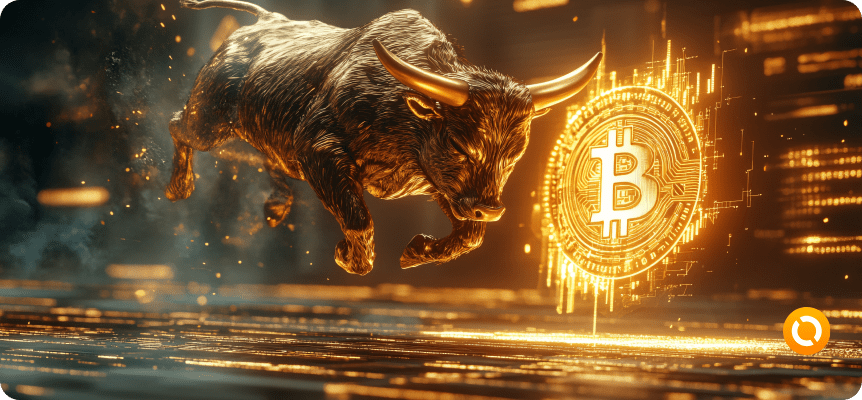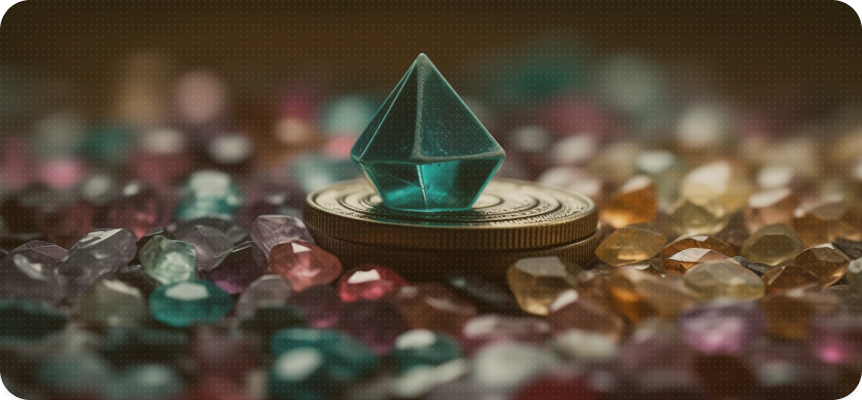This phenomenon is rapidly developing, attracting both private users and large companies creating new economic models within the virtual reality.
Cryptocurrencies, tokens and NFTs are becoming the main financial instruments of the metaverse, providing users with access to unique opportunities, secure transactions and digital goods. Virtual worlds are becoming a full-fledged ecosystem in which digital assets play a key role, allowing users to own, exchange and monetize virtual values.
Let’s take a closer look at what the metaverse is and how it relates to cryptocurrency.

What are digital assets and cryptocurrencies?
Digital assets are financial instruments based on blockchain technology that provide a high degree of security, transaction transparency, and decentralization. They play a central role in the virtual economy, offering users a variety of use cases, from purchasing digital goods to investing.
The main types of digital assets are:
- Cryptocurrencies are decentralized virtual money (Bitcoin, Ethereum) that are used for payments, investments, and storing capital.
- NFTs (non-fungible tokens) are unique digital objects that confirm ownership of works of art, virtual items, collectible cards, and more.
- Metaverse tokens are special virtual assets used for transactions within specific virtual worlds (e.g. MANA in Decentraland, SAND in The Sandbox).
- With these digital assets, users can freely interact with the virtual environment, create and sell unique objects, and earn real money in the metaverse.
Why are cryptocurrencies and digital assets in demand in virtual worlds?
Blockchain and digital assets provide the metaverse with a sustainable economic system that has a number of advantages:
- Decentralization. Unlike traditional financial systems, cryptocurrencies are not controlled by central banks, making them accessible to users around the world.
- Security and transparency. Each transaction is recorded in the blockchain, eliminating the possibility of fraud or data forgery.
- Ease of trading. Digital assets can be quickly exchanged, sold or bought on specialized platforms, ensuring high liquidity.
- Ownership. NFTs and tokens guarantee ownership of unique digital assets, preventing their copying and illegal distribution.
- Investment opportunities. Many users invest in promising tokens and NFTs, counting on their growth in price.
How do digital assets integrate into the metaverse?
Every year, digital assets are becoming an integral part of virtual worlds. Their use includes:
- Buying and selling virtual real estate. In the metaverse, you can buy virtual land and buildings that grow in value over time.
- Creating and selling NFT content. Users develop unique items, avatars, clothing, and other digital goods that are then sold for cryptocurrency.
- Virtual labor and earnings. In the metaverse, you can earn money by completing various tasks, participating in eSports, trading NFTs, or being creative.
- Gamification and Play-to-Earn. Many virtual games allow users to earn tokens that can then be exchanged for real money.
Popular Digital Assets in the Metaverse
The digital asset market in the metaverse is developing rapidly, and among the most popular solutions, several key categories can be identified. One of the most popular forms is NFT – unique digital tokens that allow users to own collectibles, works of art, game assets and even virtual real estate. Thanks to blockchain technology, they confirm authenticity and ownership, eliminating the possibility of counterfeiting.
In addition to NFT, metaverse tokens issued by the virtual worlds themselves play a significant role. They act as an internal currency with which users can buy virtual goods, pay for services, participate in gaming processes and invest in the development of digital worlds. Such tokens become not only a means of payment, but also a tool for voting in decentralized projects, as well as a way to generate income through staking and farming.
In addition, classic cryptocurrencies such as Bitcoin and Ethereum are actively used in metaverses. They serve as a universal means of exchange, with their help you can purchase various assets and pay for services on specialized platforms. Virtual worlds like Decentraland and The Sandbox rely heavily on these cryptocurrencies as they provide liquidity and financial stability to the ecosystem.
Where to buy digital assets for the metaverse?
The process of acquiring digital assets has become much easier thanks to the variety of platforms. To buy NFTs, users often turn to the OpenSea marketplace, which offers many unique collections.
Cryptocurrency exchanges such as Binance and Coinbase allow you to purchase tokens and cryptocurrencies needed to interact with virtual worlds. In addition, each metaverse offers its own internal stores where you can buy exclusive digital items available only in a specific ecosystem.
The Role of Blockchain in Digital Assets of the Metaverse
Blockchain plays a key role in the functioning of digital assets within the metaverse, ensuring security, transparency, and protection of property rights. It prevents fraud, guarantees the authenticity of each NFT and token, and makes transactions fast and reliable.
With smart contract technology, users can interact with virtual objects, make deals, and even create their own assets without fear of third-party interference.
Conclusion
The metaverse and digital assets are not just a trend, but a fundamental change in the way people interact with the virtual environment, earn and invest. Today, the largest brands, gaming studios and tech giants are creating their metaverses, introducing blockchain and cryptocurrencies into the digital economy.
Every year, virtual worlds are becoming more advanced, and digital assets are becoming more valuable. Virtual real estate, NFT collections, metaverse tokens and cryptocurrencies are forming a new financial system in which users can not only have fun, but also build a business, invest and earn.
Those who begin to understand this today will gain a unique advantage in the future. The metaverse is a new reality, and right now its first rules, trends and leaders are being formed. The only question is, are you ready to become part of this digital revolution?











